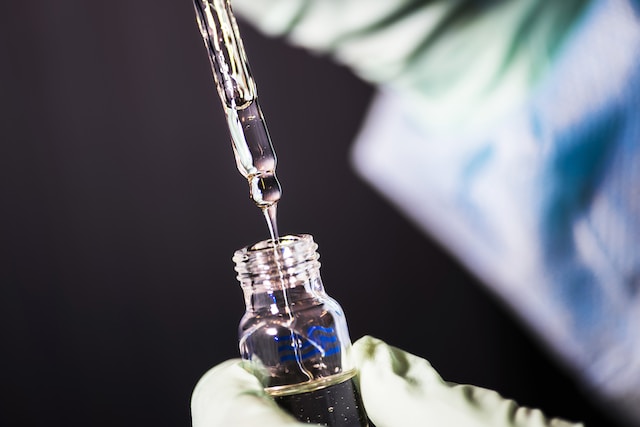The pipeline for developing drugs to treat and prevent disease is a long one. This is especially true for live biotherapeutics (LBPs), which the FDA defines as a biological product that contains live organisms, treats, prevents, or cures a human disease, and is not a vaccine. Like any other drug candidate, an LBP candidate must undergo intense preclinical research. These studies must answer a wide array of questions ranging from how safe the drug is to how the drug is supposed to treat a disease of interest. Once an LBP has passed the preclinical phase, it must undergo a series of clinical trials to show that the candidate is safe to consume and can treat or prevent the disease in question.
At the Microbiome Movement Drug Development Conference hosted by Hanson Wade, I had the great pleasure of interviewing Dr. Samantha Coulson, Head of Clinical Research and Clinical Trial Manager at Servatus Biopharmaceuticals. The Australia-based company develops a wide range of LBPs for different diseases and conditions, including rheumatoid arthritis and insomnia. With all that R&D going on, Samantha is the perfect expert to shed light into the process of managing all these clinical trials and ensuring that patients have more viable options for managing disease.
PN: Let’s start by talking about the people we’re trying to help: the patient. How do you ensure that patients of all ethnicities are covered in your clinical trials?
SC: To start, there’s not so much of a diversity barrier when it comes to setting up clinical trials. We at Servatus constantly strive to ensure that we cover patients of all clinical manifestations and ethnicities. Where the real challenge comes in is setting our inclusion/exclusion criteria. These criteria define the patient population that we are investigating. It helps us determine which patients our LBPs are expected to work on and to ensure that any effects we’re seeing are due solely to the LBP and not other factors that would confound our results.
I’ll give an example from our own LBP pipeline to illustrate this point. The medications a person takes to manage their rheumatoid arthritis (RA) can make it difficult to determine whether it’s the existing drugs or our therapy that’s working. The most notable of these medications are disease-modifying anti-rheumatic drugs (DMARD), because they can interfere with several pathways of the immune system that mediate inflammation. I would say then that what makes it harder to include patients are the exclusion criteria.
PN: From what you’ve said, it’s clear that exclusion criteria are vital for a successful clinical trial. But how do you know what criteria to use?
SC: Well there’s two really good solutions to this challenge, both of which involve a lot of collaboration and expertise.
- Honing on the literature: The scientific literature has a massive body of work on all the diseases we work on. A quick look through PubMed will show you over 150,000 articles on RA that have especially skyrocketed in the past half-decade. And that’s just one disease we’re talking about. With such a huge mountain of literature on the topic, my team of myself and three colleagues spend months upon months just to read and discuss the literature. We perform literature reviews and speak with other specialists on each disease we look at. As such, we might not start out being specialists for a disease, but after a long process of reading articles and writing clinical protocols, one can truly become an expert. Once you become an expert, you can focus on knowing how to best include and exclude your patients and develop your LBPs in a way that best treats a given disease indication.
- Collaborating with diverse groups and committees: Even after having a team for researching information, we find that collaborations with other groups are just as important for designing the inclusion/exclusion criteria. With so many clinical phenotypes and mechanisms to consider, any team has to undergo extensive planning to design a drug, especially an LBP. That’s where collaborations come in. Whenever we have any blind spots, we speak with other experts to shed light on variables we may not have considered.
PN: Wow! There’s a lot to think about from the patient side. We haven’t even talked about the microbial side of things either. What goes into characterizing the bacteria that comprise your LBPs?
SC: The LBPs themselves a whole other beast we’re talking about, both figuratively and literally. There are just as many variables to consider when developing an LBP, whether a single microbe or a consortium of them. Here’s just a few of them to consider:
- Antibiotic resistance genes (ARGs): We are facing an antibiotic resistance crisis, with many people predicted to die from resistant infections. We don’t want to exacerbate that problem even further by providing a venue for bacteria to transfer resistance genes to each other. I can point to a New England Journal article showing how a patient was killed by FMT as an example. That patient was infected by an antibiotic-resistant E. coli strain which ended up infecting their blood. The strain became harder to treat and the patient ultimately succumbed to the infection. Instances like these are why whole-genome sequencing (WGS) is a well-used technique for characterizing the LBPs we’re developing. It helps us find ARGs within their genomes, their genetic content, and helps us exclude certain bacterial candidates in the process.
- Virulence factors: A virulence factor is any component of a bacterial cell that allows it to cause human disease. A whole array of different proteins and molecules can act as virulence factors, ranging from toxins to antibiotic resistance proteins. WGS can help identify genes that encode these virulence factors to exclude some bacterial groups from further testing. Other in vitro assays can also be done to characterize these factors further, but like the ARGs, a lot of characterization needs to be done here.
- Potency: A drug’s potency typically refers to the amount of drug that’s needed to produce an effect. The more drug needed to produce an effect, the less potent it is. With LBPs, potency takes on a different definition. It instead refers to the amount of live bacterial cells present in each dose of the LBP. Knowing that the bacteria continue to survive throughout the processing and dosage stages is essential to making sure that the LBP can be used in the clinical safely and effectively.
PN: That’s surely a lot to think about from both ends! I’m sure you applied that effort in the data you presented for your talk on insomnia.
SC: Oh, absolutely. On top of that, I was looking at such a unique area because no one was looking at how LBPs could be developed to treat insomnia. There was a strong literature regarding possible mechanisms of microbial modulation in insomnia,. However, there was no literature that directly discussed developing LBPs to treat insomnia. There are so many mechanisms to think about, especially in connection with the circadian rhythm. In much the same way as we have wake sleep cycles, the microbial communities in your gut also have similar cycles in their composition during the day and overnight.
That was what I wanted people to learn from my talk: that there is a whole underappreciated field of research into how we get a good night’s sleep and how we can modulate that by altering the gut microbiome. With our work at Servatus, I’m eager to continue developing SVT-4A1011 to treat insomnia and oversee its development all the way to the end.
Special thanks to Hanson Wade for having GenoWrite be a media partner for the Microbiome Movement conference. Thanks to them as well for kindly approving the written content for this article.
Author
-

Paul Naphtali is a seasoned online marketing consultant. He brings to the table three years of online marketing and copywriting experience within the life sciences industry. His MSc and PhD experience also provides him with the acumen to understand complex literature and translate it to any audience. This way, he can fulfill his passion for sharing the beauty of biomedical research and inspiring action from his readers.
View all posts




